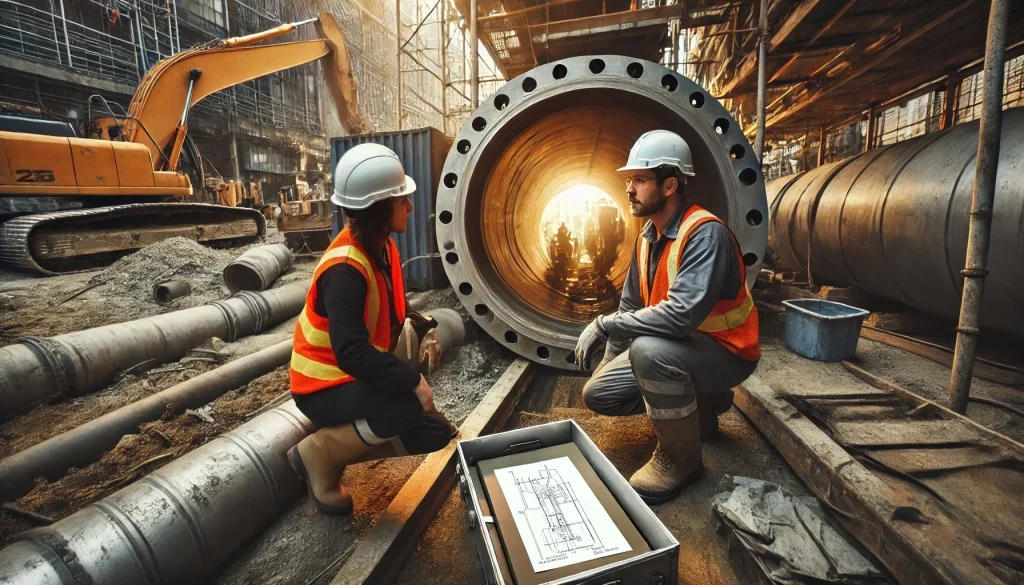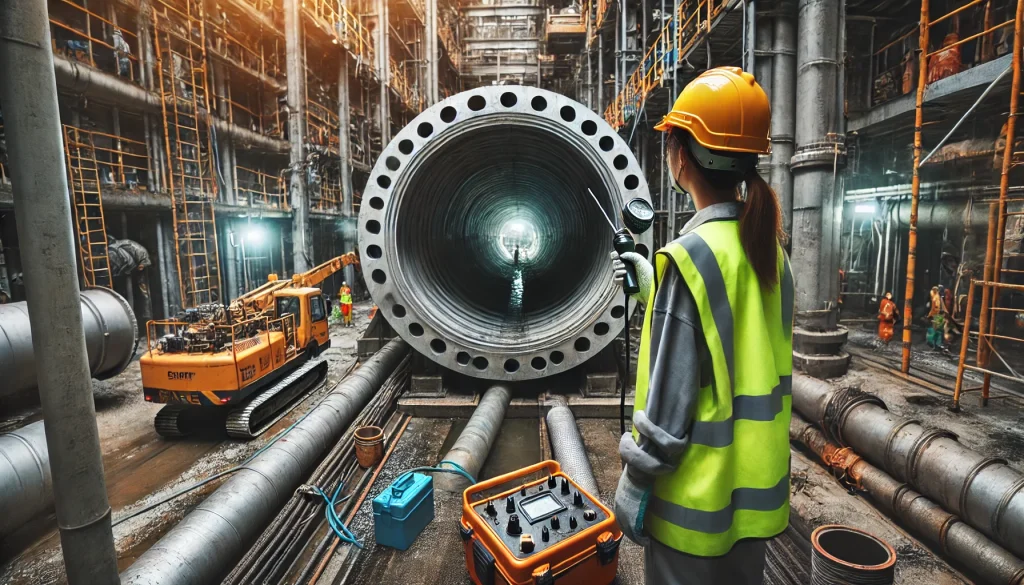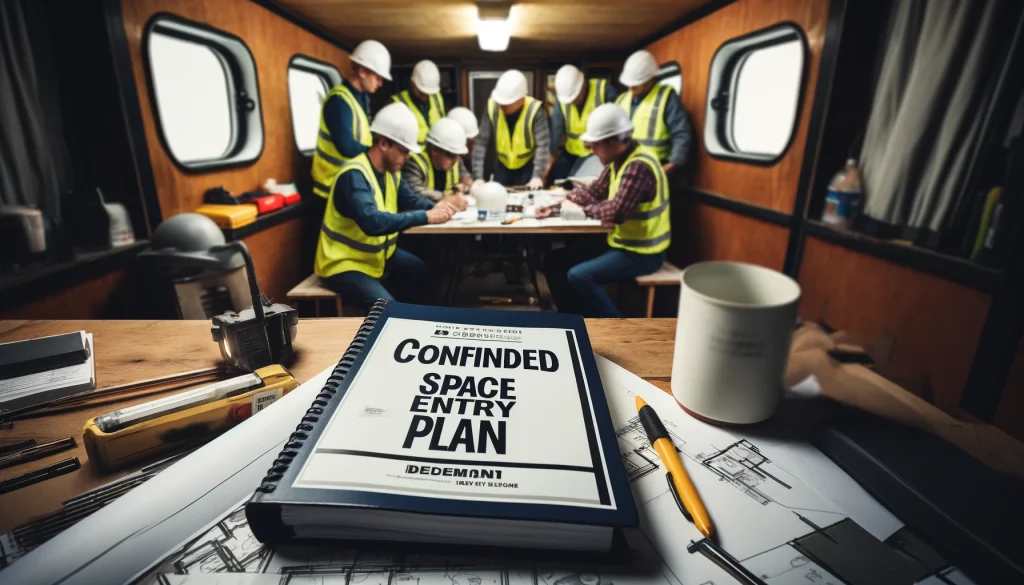Creating a Confined Space Entry Plan: Best Practices

Imagine a construction site, where workers navigate a maze of machinery, scaffolding, and equipment. Amidst this organized chaos lies a hidden danger—a confined space. These areas are not designed for continuous human occupancy and have limited or restricted means of entry or exit. Confined spaces in construction, manufacturing, and utilities pose significant risks without proper safety measures. That’s why a well-developed Confined Space Entry Plan is crucial to ensure worker safety and prevent accidents.
Therefore, to safeguard employees and ensure regulatory compliance, developing a comprehensive confined space entry program is crucial.
Understanding Confined Spaces
Consider the story of John, a seasoned worker in the manufacturing industry. One day, John was assigned to clean a storage tank, a classic example of a confined space.
Despite its seemingly simple task, the job carried hidden perils. Confined spaces like storage tanks, silos, sewers, tunnels, and pipelines vary in size and complexity. However, they share common characteristics that make them hazardous. Specifically, Limited entry points hinder evacuation, while poor ventilation leads to toxic gas accumulation or low oxygen levels. Thus, understanding these inherent dangers is the first step in developing an effective confined space entry plan.

Regulatory Requirements
To protect workers like John, regulatory bodies such as the Occupational Safety and Health Administration (OSHA) have established stringent standards for confined space entry. According to OSHA’s Permit-Required Confined Spaces (PRCS) standard, employers must evaluate their workplaces to determine if any spaces are classified as confined and implement a written confined space entry plan if permit-required confined spaces are present. Moreover, compliance with these regulations is not only a legal obligation but also a critical component of ensuring worker safety.
Components of a Confined Space Entry Plan
Hazard Assessment
The foundation of any confined space entry plan is a thorough hazard assessment. Imagine Sarah, a safety officer, walking through her plant with a checklist in hand. She meticulously identifies and evaluates potential hazards within the confined spaces.

Common hazards include toxic gases like hydrogen sulfide or carbon monoxide, oxygen deficiency, and physical dangers such as engulfment or entrapment. Therefore, conducting a comprehensive hazard assessment allows employers to implement appropriate control measures and informs the development of other plan components.
Entry Permit System

Next, consider Mark, a supervisor over a team of workers. He knows that an entry permit system is essential for managing and controlling access to confined spaces. Each permit includes vital information such as the date and duration of the entry, the names of authorized personnel, and the specific tasks to be performed. Furthermore, it also details the hazards present, the control measures implemented, and the emergency procedures in place. By requiring an entry permit, Mark takes all necessary precautions have been taken before workers like John enter a confined space.
Training and Competency
Effective training is critical for ensuring that workers understand the hazards associated with confined spaces and the procedures for safe entry and exit. Picture a training session led by Jane, a confined space training expert. She covers topics such as hazard recognition, use of personal protective equipment (PPE), emergency response, and the specific duties of each team member. Additionally, it’s essential for regular refresher training and competency assessments are essential to maintaining a high level of safety awareness and preparedness among employees.
Emergency Response Plan

One day, during a routine operation, an unexpected incident occurs. This is where a robust emergency response plan becomes crucial. The plan outlines the procedures for rescuing workers in the event of an emergency, including the roles and responsibilities of the rescue team, communication protocols, and the equipment required for safe rescue operations. Moreover, practicing the emergency response plan through regular drills helps ensure that all team members are familiar with their roles and can respond quickly and effectively in an actual emergency.
Equipment and PPE
The proper selection, maintenance, and use of equipment and PPE are vital for ensuring the safety of workers entering confined spaces. Imagine a worker named Tom inspecting his gear before a confined space entry. Essential equipment may include gas detectors, ventilation systems, harnesses, and communication devices. Furthermore, workers must use respirators, gloves, and protective clothing that are appropriate for the specific hazards identified in the hazard assessment. Regular inspection and maintenance of equipment and PPE are necessary to ensure their reliability and effectiveness.
Communication and Monitoring
Effective communication and monitoring are critical for maintaining the safety of workers in confined spaces. Picture Maria, standing outside a confined space, holding a two-way radio. Communication methods may include radios, hand signals, or other devices that allow continuous contact between workers inside the confined space and those outside. Moreover, monitoring procedures, such as periodic checks and continuous atmospheric testing, help ensure that conditions within the confined space remain safe throughout the entry process.
Sample Confined Space Entry Plan

A confined space entry plan involves integrating all the components discussed above into a cohesive document. Imagine the story of a safety officer compiling this plan, detailing each aspect meticulously. The introduction outlines the plan’s objectives and scope, setting the stage for a thorough hazard assessment. The plan describes the entry permit system and follows with the training and competency requirements. It elaborates on the emergency response plan, detailing step-by-step procedures and roles. The plan lists the necessary equipment and PPE, and includes maintenance procedures. Finally, the plan explains the communication and monitoring protocols, ensuring it covers every aspect.
Best Practices for Implementation
Successfully implementing a confined space entry plan requires a commitment to safety and continuous improvement. Regular audits and reviews of the plan ensure its effectiveness and compliance with current regulations. Additionally, engaging workers in the development and review process incorporates their insights and experiences, making the plan more robust. Furthermore, ongoing training and refresher courses keep employees up-to-date with the latest safety procedures and technologies. Moreover, fostering a culture of safety where employees feel empowered to report hazards and suggest improvements is essential.
Conclusion
Creating a comprehensive confined space entry plan is essential for protecting workers and ensuring regulatory compliance. By understanding the hazards, implementing robust procedures, and committing to continuous improvement, employers can create a safer work environment. Therefore, prioritizing safety and following best practices helps prevent accidents and ensures the well-being of all employees involved in confined space operations. Through these efforts, we can significantly mitigate the risks associated with confined spaces, ensuring a safer and more productive workplace.






